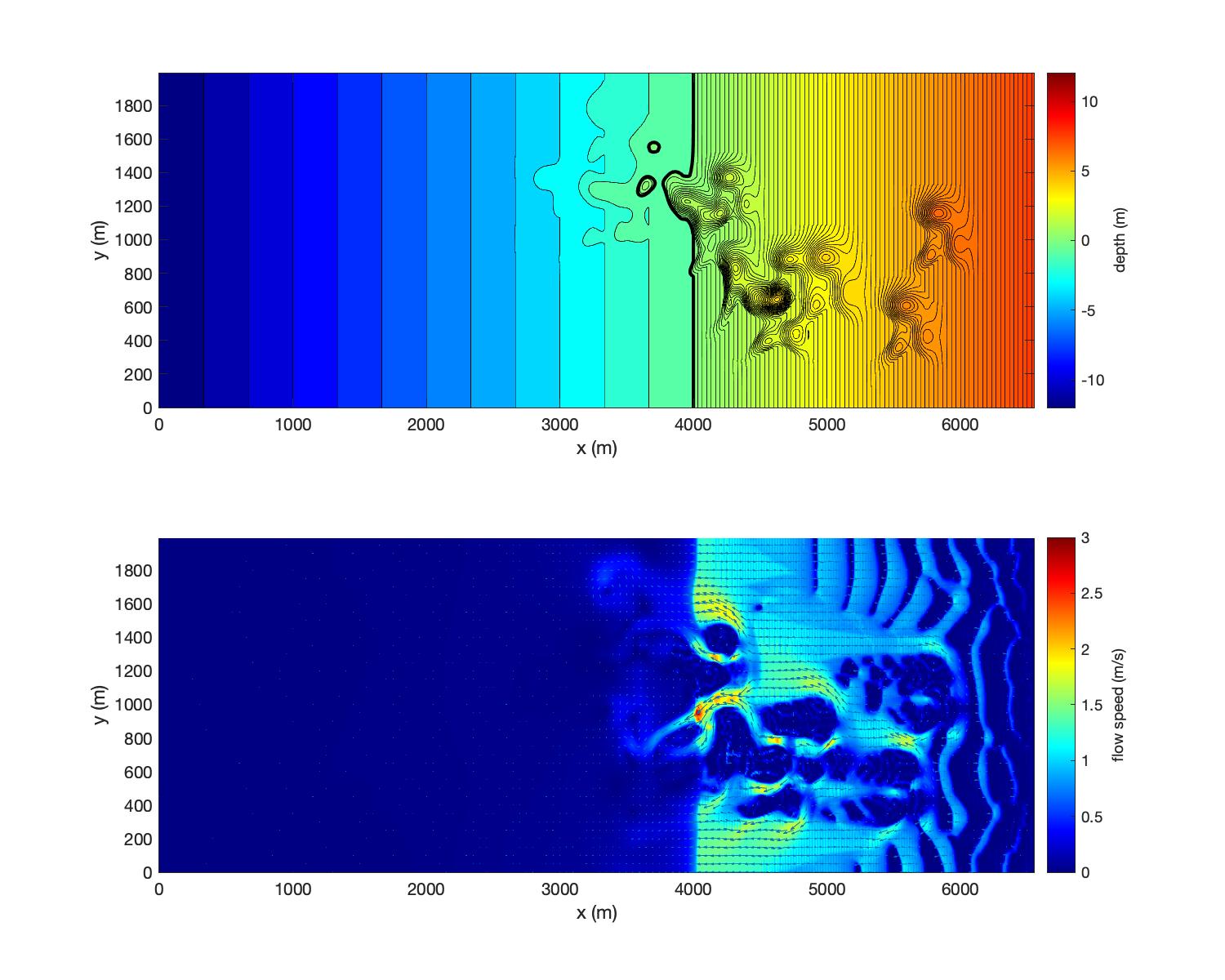Example¶

After compiling with -DPRECIPITATION in Makefile, the program includes the precipitation function. Two simple examples are included in /simple_cases/rain_on_hills/. One is a basic test of precipitation rate to check if rainfall volume is consistent with the precipitation rate specified. It can be tested on a water area with a flat bottom as demonstrated in input_basic_test.txt. The other test is a more realistic case which is rainfall on a sloping coastal area with random hills distributed on the slope. The bathymetry/topography data can be generated using mk_1_random_bathy.m. The generated data is shown in the figure on the right.

The precipitation file is specified in input.txt
RAINFALL_FILE = precipitation.txt
precipitation.txt includes
dimensions m x n which should cover the entire area of domain
2 2
following are time (s) and file names, unit in file is mm/hr
0.0
rain_01.txt
10000.0
rain_02.txt
In precipitation.txt, the first line is a comment line, informing the dimensions of the data, m x n, which should cover the entire computational domain. In this example, m = 2, n = 2, specified on the second line. The data resolution is automatically calculated based on (m,n) and grid sizes (Mglob,Nglob) specified in input.txt.
The third line is a comment line. Following the third line, you can specify time and rainfall files sequentially. In the example, time=0.0 s, file=rain_01.txt, time=10000.0 s, file = rain_02.txt. The model will continue to run with the last rainfall data entry in precipitation.txt.
The rainfall file includes the precipitation rate in (m x n). The data will be interpolated into the computational grid automatically.
Note
The unit of precipitation rate is mm/hour. It will converted into m/s automatically by the program.
Model results can be plotted using plot_uv.m or movie_uvz.m as shown in the figure.
